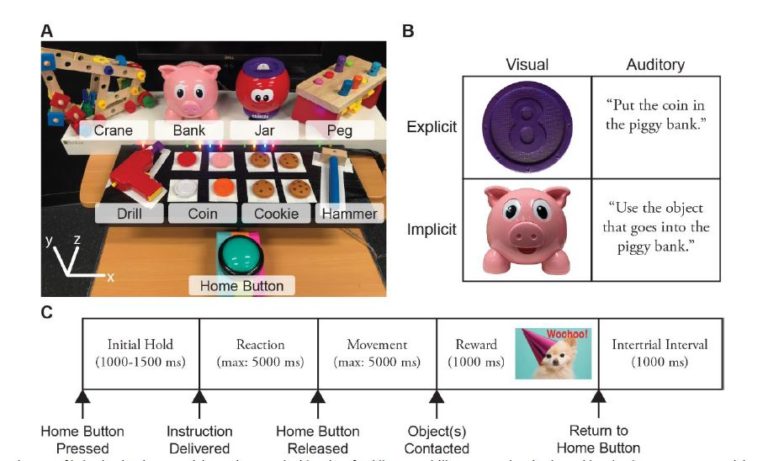
Studies of sensorimotor integration often use sensory stimuli that require a simple motor response, such as a reach or a grasp. Recent advances in neural recording techniques, motion capture technologies, and time-synchronization methods enable studying sensorimotor integration using more complex sensory stimuli and performed actions. Here, we demonstrate that prehensile actions that require using complex sensory instructions for manipulating different objects can be characterized using high-density electroencephalography and motion capture systems. In 20 participants, we presented stimuli in different sensory modalities (visual, auditory) containing different contextual information about the object with which to interact. Neural signals recorded near motor cortex and posterior parietal cortex discharged based on both the instruction delivered and object manipulated. Additionally, kinematics of the wrist movements could be discriminated between participants. These findings demonstrate a proof-of-concept behavioral paradigm for studying sensorimotor integration of multidimensional sensory stimuli to perform complex movements. The designed framework will prove vital for studying neural control of movements in clinical populations in which sensorimotor integration is impaired due to information no longer being communicated correctly between brain regions (e.g. stroke). Such a framework is the first step towards developing a neural rehabilitative system for restoring function more effectively.

